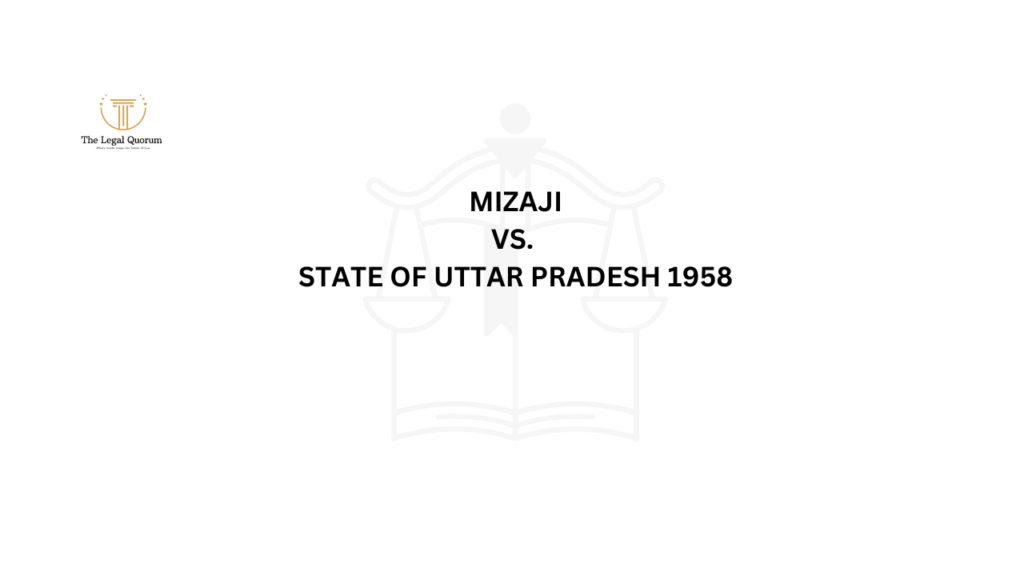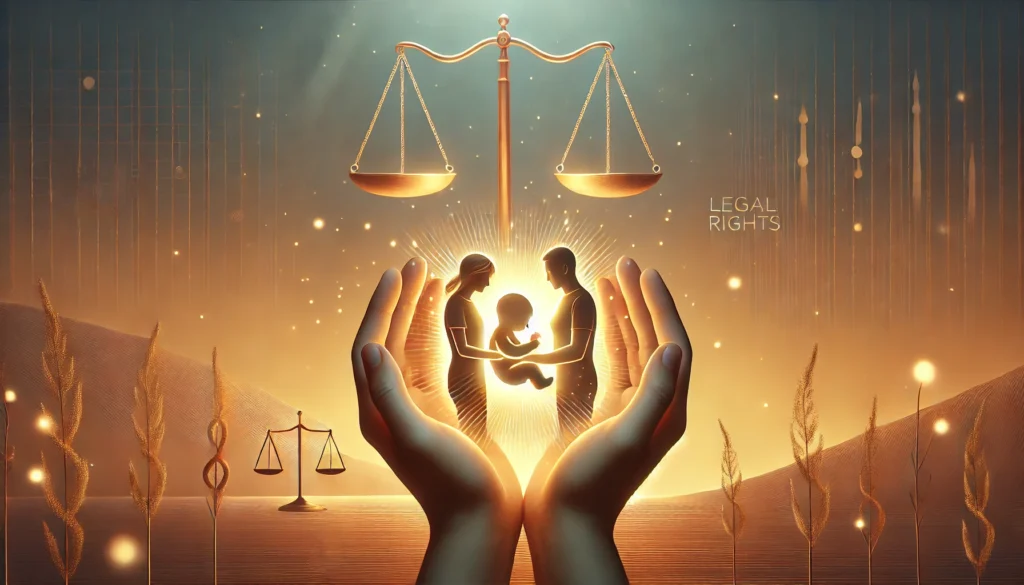Published On: 20th March, 2024
Citation : 1966 AIR 543, 1966 SCR (1) 656
Coram : Shah J. C , J. , Wanchoo K.N , J. , Hidayatullah .M , J.
Court: Supreme Court of India
INTRODUCTION
Starting with Section 2(b) of the Indian Contract Act, 1872, which addresses the acceptance of contracts, a proposal is deemed to have been accepted when it is offered to a person and that person indicates their consent. A proposal that has been accepted transforms into a promise. The Contract Act of 1862’s Section 2(b) emphasizes the significance of transmission of acceptance. It is crucial to communicate acceptance since without it, an agreement cannot be claimed to have been reached. There are several ways to convey acceptance, including via phone, mail, or postal service. When acceptance is communicated through telephone, any immediate channel, or the mail, different rules apply than when it is sent via other means. When a letter is placed in the mailbox or a phone call is made, an acceptance of the message is considered to have been made. When the party who made the offer receives the acceptance, the contract is said to have been made, and the message of acceptance is complete. In the case of Bhagwandas Goverdhan Das Kedia vs. Girdharilal ParshottamDas & Co., The law governing the location of contract formation resulting from a telephone call was established.
The case of Bhagwandas Goverdhandas Kedia vs. M/s Girdharilal Parshottamdas and Co expanded the parameters of offer and acceptance communication. In this instance, the question of where to file a lawsuit after an agreement was reached over the phone was resolved. In this instance, the question of whether jurisdiction exists where the offeror is, that is, where the offeror hears the acceptance by instantaneous communication as opposed to postal transmission, was decided.
FACTS OF THE CASE
The facts of the case go like this: In fact, Bhagwandas Govardhana’s Kedia Oil Mills agreed over the phone on July 22, 1959, to sell cotton seed cakes to M/s Girdharlal Purshottama’s & Co. of Ahmedabad. The defendant at Khamgaon did accept this offer that the plaintiff had made over the phone.
In other words, the plaintiff really filed a lawsuit against the appellant at the Ahmedabad city civil court after the latter failed to deliver the agreed-upon seed cakes, and the plaintiff sought damages for the Rs. 31,150 in losses it experienced as a result. The plaintiffs accepted the defendants’ offer to sell cotton seed cake in Ahmedabad, and as a result, the lawsuit was filed there. According to the terms of the contract, the defendants were required to ship the goods to Ahmedabad and obtain payment from a bank there. The first point of contention for the defendant was the venue for the court hearing the case. The appellant argued that the civil court in Ahmedabad lacked jurisdiction over this issue because the offer to purchase was accepted at Khamgaon and the delivery was also agreed to take place there.
On the basis of this, the plaintiff argued that the contract was formed when the acceptance was delivered to him in Ahmedabad, making the Ahmedabad High Court the proper venue for the lawsuit. As a result, when it came to the question of jurisdiction, the trial court held that the contract was to be created in Khamgaon and that Ahmedabad’s court lacked jurisdiction to hear the case because of the offer Ahmedabad made to buy the products. A civil court in Ahmedabad was determined to be competent to hear the matter since at this location the offeror gets informed informally when an offer is accepted. The Gujarat High Court refused in limine the defendants’ plea for a rehearing against the judgement ordering the lawsuit to continue on the merits. To submit this appeal, special approval from the Gujarat High Court was obtained.
ARGUMENTS
ARGUMENTS ON BEHALF OF THE PLAINTIFF
The plaintiffs argued that making an offer is an essential element of the cause of action and that the court should have jurisdiction over the matter based on the territory in which the offer was made by the offeror and accepted, resulting in a contract. Additionally, the plaintiff had argued that the communication of acceptance of the offer was a crucial component in the creation of the contract and that the contract was formed where the offeror received the communication of acceptance.
ARGUMENTS ON BEHALF OF THE DEFENDANT
The defendants argued that when a contract is made over the phone, the location where the offer made by the offeror is accepted can be considered the location of the contract or the place of the contract, and the court with jurisdiction over that location has jurisdiction.
ISSUES
- In accordance with the Indian Contract Act of 1872, which court has the authority to hear the case?
- Examining and settling the issue of “when” the contract was finished will serve to determine each party’s responsibility to the other.
JUDGEMENT
The Supreme Court ruled that making an offer at a location where it has already been accepted elsewhere does not constitute a basis of action for breach of contract or damages. According to the Supreme Court, a contract is often created by an acceptance. The law considers some type of external manifestation to be adequate as the indication or demonstration of the communication. According to one theory, the authors of the Indian Contract Act could not have foreseen the use of telephone conversations for contract formation and so could not have planned to create any legislation in support of it. The Trial Court correctly believed that part of the cause of action originated in Ahmedabad, where the offer was accepted by the plaintiff over the phone, according to the Supreme Court. The appeal was rejected by the Supreme Court. In light of this, the Supreme Court has determined that the site where the offeror receives notification of acceptance is where the contract is deemed to have been formed. In the aforementioned case, Justice Hidayatullah provided the dissenting opinion.
RATIO DECIDENDI
Justices Shah, Wanchoo, and Hidayatullah ruled over this case, and a majority decision of 2:1 sided with the respondents. Justices Shah and Wanchoo reasoned that the consensus ad idem principle and the prevalent international consensus both support the notion that a contract is created when consent is verbally expressed. They argued that the 1872 Indian Contract Act did not specifically protect agreements made during instantaneous contact, such as telephone calls. They defended the Ahmedabad Civil Court’s authority by arguing that the contract was created at the site of the first act of acceptance. The Indian Contract Act applied in India, although Justice Hidayatullah expressed disagreement, pointing out that it was inspired by English Contract Law. In line with the Entores v. Miles Far East Corporation precedent, he thought that a contract could only be created when the offeror heard and understood the acceptance as well as it was said. He believed that the acceptance, not the location of the telephone conversation, determined the location of the contract. He claimed that the Ahmedabad Civil Court lacked jurisdiction as a result.
This case emphasized the need for legal clarity about agreements made using contemporary communication tools, underscoring how contract law is always changing.
ANALYSIS
According to the case in question, there are a number of crucial Indian contract law issues that need to be clarified. First of all, it makes no mention of e-contracts, a technique of contract creation that is rapidly expanding. The Information Technology Act, of 2000 governs e-contracts in India, and its particular legal ramifications should be discussed. In addition, the case in which a third party maliciously obstructs the contact between the offeror and offeree needs to be taken into account legally. In such circumstances, the Indian Contract Act, of 1872, in particular Section 73, which addresses the repercussions of contract violation, may be applicable. The recovery of damages suffered as a result of the contract violation is permitted under this clause. It is crucial to establish which jurisdiction’s laws would apply to any foreign contracts created by telephone acceptance as well as where disputes will be heard. Normally, the contract’s provisions outline the prevailing law and the place where disputes will be resolved. For the sake of clarity, this must be specifically stated. Last but not least, the case’s omission of how to handle circumstances in which an offeree accepts a contract under duress from a third party poses legal culpability issues. The theory of undue influence and other contract law rules may be applicable in such cases, and the damaged party may be able to seek redress. The jurisdiction and particulars of the case would determine the proper court in such situations.
After effects of the case: The situation regarding contracts created through telephone talks and the authority of the courts in that subject were both defined in the case of Bhagwandas Goverdhandas Kedia vs. Girdharilal ParshottamDas & Co. It was made clear that communication between the parties when they are face-to-face would primarily depend on the terms of the offer and the environment in which it was made.
- The Bhagwandas GoverdhanDas Kedia Case was cited by the Supreme Court in Republic Medico Surgical Company Union of India and Anr. to draw the conclusion that merely making an offer does not give rise to a cause of action for a lawsuit for breach of contract and damages that results from an acceptance of an offer. In the aforementioned case, the defendant in Bhubaneswar accepted the tender made to him or her and agreed that the products would be delivered there and that the payment would also be made there. It was clear that Bhubaneswar is where the cause of the activity originates. In this instance, the Trial Court’s conclusions were confirmed, and the appeal was dismissed.
- In Garware Nylons Limited Swastik Yarns, the court cited Bhagwandas Goverdhan Kedia’s ruling and found that when the offer’s maker receives an acceptance call, a contract can be considered to have been established over the phone.
- In the case of Sadhna Arun Kothari & Ors v. Raj Bhalla, the court affirmed the principles established in Bhagwandas Goverdhan Das Kedia.
- In the case of Quadricon Ltd. vs. Bajrang Alloys Ltd., the ruling in Bhagwandas Goverdhan Das Kedia was applied in order to draw comparisons between telephone and fax communication. The court stated that instantaneous communication methods like telex and fax are both types of instantaneous communication. It is also claimed that telephone connections are used to carry out fax communications.
- In the case of M/S Besant Raj International vs. M/S Vishwa Bharathi Textiles, the court also cited the Bhagwandas Goverdhandas Kedia principle.
CONCLUSION
The Bhagwandas Goverdhan Das Kedia vs. Girdharilal ParshottamDas & Co. case has established a significant legal precedent in India regarding contract formation through phone or teleprinter communication. It is now widely recognized that in such cases, the parties are deemed to have entered into the contract face-to-face. The crucial determinant of the contract’s location is where the offeror is physically present upon receiving notification of acceptance. This ruling distinguishes instantaneous communication methods from traditional mail, where acceptance is complete when the letter is posted. Therefore, in rapid forms of communication like phone calls, the contract is considered formed at the offeror’s location, providing clarity in the modern context of contract law in India.




